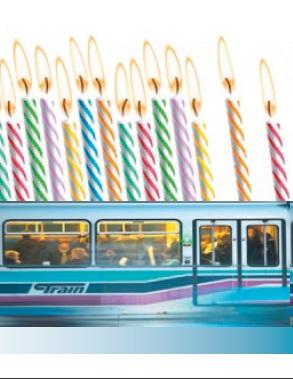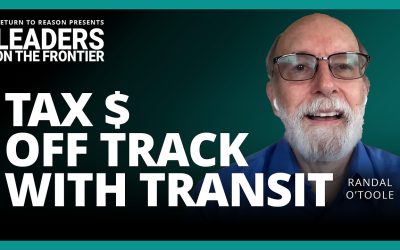 Up until the last decade or so, Calgary was considered a sprawling city where the vast majority of adults own two cars and live in the suburbs. This stereotype was accurate. Since then, Calgary has developed a new stereotype. Many urban gurus now think of it as a reformed auto-dependant city that has aggressively expanded public transit to curb urban sprawl. This is due to the copious praise the City receives for its CTrain light rail transit system (LRT). Transportation planners from the City routinely appear at conferences where they inspire planners of other mid-sized North American cities to emulate their transit system.
Up until the last decade or so, Calgary was considered a sprawling city where the vast majority of adults own two cars and live in the suburbs. This stereotype was accurate. Since then, Calgary has developed a new stereotype. Many urban gurus now think of it as a reformed auto-dependant city that has aggressively expanded public transit to curb urban sprawl. This is due to the copious praise the City receives for its CTrain light rail transit system (LRT). Transportation planners from the City routinely appear at conferences where they inspire planners of other mid-sized North American cities to emulate their transit system.This May 25th, the CTrain will officially turn 30. While this will surely be seen as a celebratory occasion, it is also an appropriate time to evaluate the performance of the system. Is the new Calgary stereotype correct? Is the City now a model for public transportation in mid-sized North American cities? Sadly, the answer is no.
Two false premises are the basis of the new Calgary stereotype. First, it assumes that the CTrain is cost-effective. This notion is based primarily on the capital costs of early CTrain construction, and it does not take into account the staggering costs of recent extensions. The West LRT, currently under construction, ranks among the most expensive LRT lines ever built. It also does not account for a myriad of hidden subsidies. The conservative estimate herein puts the cost per paying rider at roughly $2.88, though that number will increase as newer, more expensive lines in less-populated areas are built.
Second, it assumes that the CTrain is actually getting people out of their cars — it is not. Despite the City’s Draconian efforts to curb downtown parking, more people drive downtown than in any other Canadian city.
Calgarians travel further to work than do residents of any Canadian city with a population over one million, save Edmonton. Calgary spends $1,152 per capita on roads and transit, which is 25 per cent more than its closest rival, Edmonton spends.
That the CTrain is a tool to combat rampant urban sprawl in Calgary has no basis in reality. Since 1968, CTrain developments have been a cornerstone of Calgary’s urban planning strategy. Some past and present Calgary Transit officials have recognized that rather than curtailing sprawl, the CTrain has actually helped drive urban sprawl. By extending rail transit far into the suburbs, the City has made it more convenient for families to locate further away from the core. This does not mean that they rely on the CTrain for regular commuting, but it is an amenity for the children. Moreover, since parking is artificially restricted downtown, many commuters use the heavily subsidized (now free) park-and-ride lots at CTrain stations rather than drive downtown. However, this is not getting them out of their cars; it is little more than a glorified shuttle service.
By focusing its transit strategy on the CTrain, the City has foregone the superior option of introducing a faster, cheaper and more flexible alternative — bus rapid transit (BRT). The independent U.S. Government Accountbility Office recognizes BRT as a superior alternative to LRT. While Calgary has created some BRT lines, it has primarily done so as a temporary measure until the heavily indebted City can afford to spend well over $1-billion to build the proposed Southeast LRT line, among others. Rather than treating BRT as a temporary measure, the City would be wise to focus future transit spending on BRT. This would allow the City to service more of the city with rapid transit at a lower cost.
View entire study as PDF (28 Pages)
 Up until the last decade or so, Calgary was considered a sprawling city where the vast majority of adults own two cars and live in the suburbs. This stereotype was accurate. Since then, Calgary has developed a new stereotype. Many urban gurus now think of it as a reformed auto-dependant city that has aggressively expanded public transit to curb urban sprawl. This is due to the copious praise the City receives for its CTrain light rail transit system (LRT). Transportation planners from the City routinely appear at conferences where they inspire planners of other mid-sized North American cities to emulate their transit system.
Up until the last decade or so, Calgary was considered a sprawling city where the vast majority of adults own two cars and live in the suburbs. This stereotype was accurate. Since then, Calgary has developed a new stereotype. Many urban gurus now think of it as a reformed auto-dependant city that has aggressively expanded public transit to curb urban sprawl. This is due to the copious praise the City receives for its CTrain light rail transit system (LRT). Transportation planners from the City routinely appear at conferences where they inspire planners of other mid-sized North American cities to emulate their transit system.

